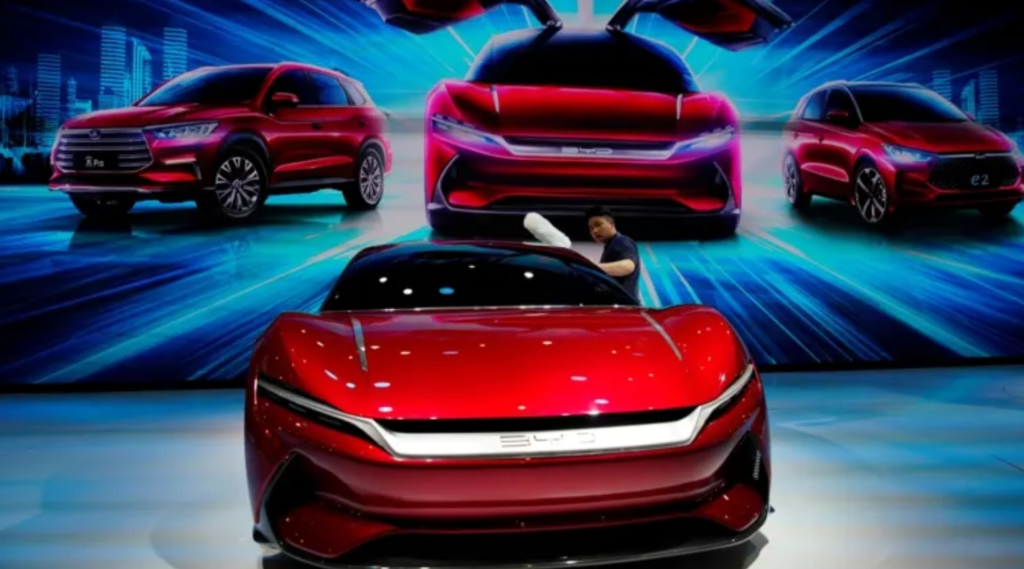
For years, Chinese automobile makers have failed to enter the European market, known to be mature and conservative. But last year’s unexpected boom in sales of electric vehicles in Europe is expected to change the game.
One of China’s major EV makers, Xpeng, announced late December that it would start delivering its G3 smart electric SUVs to Norway — its first export to Europe.
“Our launch in Europe comes just as consumers are shifting in increasingly large numbers to more sustainable personal transport, and at a tipping point where governments around the world are stepping up their zero-emission efforts,” said Xpeng CEO and Chairman He Xiaopeng.
New York-listed Xpeng is trying to develop its international strategy, and exporting the G3 at this time is a kind of kickoff. The penetration rate of electric vehicles in Norway is the highest in Europe, reaching 54% of new car sales in 2020. China’s largest EV maker, BYD, has launched its low-cost luxury SUV Tang there.
Xpeng launched its first model in 2018 and sold 21,341 units from January to November in 2020, representing an 87% increase year-over-year. The company is targeting markets with supportive government policies and advanced infrastructure. Xpeng plans to supply its P7 electric sports sedan to European countries this year.
In addition to Xpeng and BYD, SAIC Motor will launch an SUV model this month and will introduce at least two more models this year in several Western European countries. Startup Nio also intends to enter the European market as soon as 2021.
For the time being, the market shares of Chinese manufacturers are very low in Europe. In 2019, sales of Chinese electric cars accounted for only 0.6% of sales in Europe, compared with 22.5% of those made in Germany and 12% of those from France. European consumers continue to trust traditional European automakers. According to JATO Dynamics, the bestselling EV car in Europe in October was the Volkswagen ID.3, followed by Renault’s Zoe.
Chinese companies haven’t established branding or distribution networks in Europe yet. Germany and France, the two largest markets in the European Union, seem especially reluctant to welcome Chinese cars because of their strong domestic auto industries.
But Chinese EV makers find that now there is a good chance of changing the situation because the EV market has grown sharply in Europe last year despite serious economic downturns due to the coronavirus pandemic.
Registrations of new pure electric and plug-in hybrid cars reached 1.05 million units between January through November in 18 European countries, including Germany, France, the U.K. and Norway, according to Schmidt Automotive Research.
The figure represents a doubling from the whole of 2019, mainly thanks to generous government incentives. The French government, for example, provides subsidies of up to 7,000 euros ($8,500) to consumers for each pure electric or plug-in hybrid car purchase.
Chinese makers have advantages, starting with economies of scale. About 47% of the electric cars on the world’s roads in 2019 were in China, according to the International Energy Agency, so major Chinese makers can sell quite a number of units in their home market. Secondly, they can enjoy strong state support such as purchase incentives. Some experts think their well-established production chains will bring them quality and affordable prices at the same time.
“Chinese brands, which do not have a 100-year history of combustion engine, chose to make a bet on electric vehicles. They are going straight there,” Renault CEO Luca de Meo said while expressing his concerns at a news conference in October.
The competition with Europeans will be harsh. Renault is working on a new electric car, the Megane, designed by a team of French and Japanese engineers. German leader Volkswagen in September announced a new SUV model, the ID.4.
The market shares of Chinese manufacturers may not surge dramatically. Bernard Julien, professor of economics at the University of Bordeaux, said: “In order to have a significant presence in the market, they will need large factories in Europe. But countries like Poland,[the] Czech Republic, Romania have [factories with a] rather satisfactory production level. There aren’t lots of opportunities to set foot in Europe.”





























